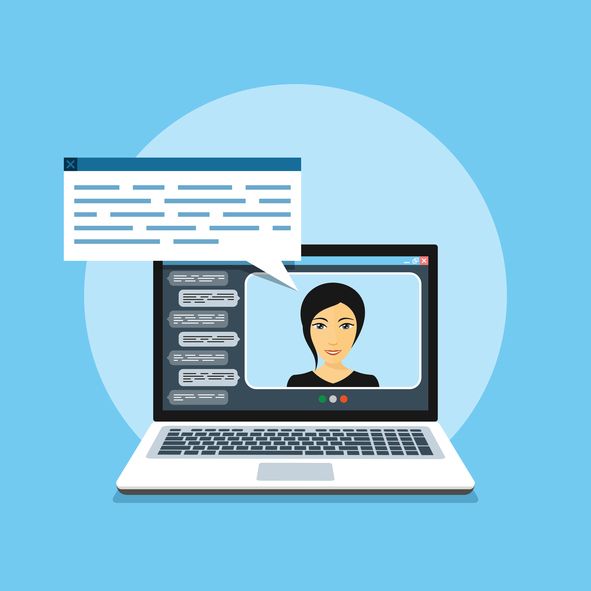Video Interviews

Video interviews (Teams, Zoom, Facetime) are now an integral part of the interview process, they are traditionally used in the early stages of the interview process to filter out large numbers of candidates, they can vary in style and length.
With the arrival of the COVID restrictions were put in place across the world and many meetings moved online and interviews were no exception. The key benefits of video meetings are the money and time savings for both you and a company.
The format isn’t without its challenges though – the main ones being connectivity problems and time delays. Not everyone is comfortable on camera, and this may put some candidates at a disadvantage. However, with some preparation these issues can be overcome and help you move on to the next stage of the process.
Live Video interview format
A live video interview is similar to a regular face-to-face interview. You’ll speak to the interviewer (or panel of interviewers) in real-time over a video connection using a service such as Skype or Zoom. Live videos enable employers to recreate the traditional interview format without requiring the candidate to travel to their office, meaning they can recruit from anywhere in world. Try to treat the conversation as you would an interview at the employer’s offices and build a rapport with the interviewer.
Dress appropriately
You may be at home but it’s still a job interview and this is your opportunity to give a professional first impression – this means dressing appropriately. You should wear the same outfit you would have chosen for a face-to-face meeting with the employer.
Think about how your clothes will look on screen and avoid busy patterns and stripes.
Choose your location
Plan well in advance where you’re going to do the video interview. Use a quiet location, where noises and people won’t disturb you.
Make sure the room you choose is tidy and use a clean and simple background so that the recruiter focuses on you.
Lighting is important, it won’t be a great interview if you can’t be properly seen. To ensure you don’t get a shadow either use natural light from a window or put a lamp in front of the camera and adjust the distance to get the best result.
Close any software on your computer that might play notification sounds and switch your phone to silent to guarantee you won’t be distracted. Also, let everyone in the house know you’re about to start the interview so they don’t interrupt.
Use positive body language
It’s best to avoid slouching, moving too much or touching your face. Instead, employers will be looking for you to make good eye contact, smile, listen and take an interest in what they’re saying. To help you do this your camera should be at eye level and you should look into it rather than at the screen.
If you’re nervous it can be easy to rush what you’re saying but remember that the employer wants to hear your answers. Speak clearly and be careful not to interrupt as this is more easily done with the slight delay over the internet than during a face-to-face meeting.
Get technical
A few days before the interview you should test the computer, camera, and any software that you’ve been asked to use. Make sure the picture is clear and the sound quality is good. It’s also worth checking your internet connection. Use a soft cloth to wipe the camera lens.
On the day of the video interview ensure everything is fully charged or plugged in, as you don’t want the battery to run down. You don’t want to be still sorting things out as the interview starts, so switch everything on at least half an hour before the interview and sign into any software that you’ll need.
If there are any technical hitches, for example if you can’t hear the questions very well, don’t struggle through, as you won’t put in your best performance. If it’s a live video interview, mention the problem. It may easily be fixed, or the interviewer may be happy to end the call and redial.
For pre-recorded video interviews, check beforehand whether you’re allowed to stop and restart in case of technical issues.
Conclusion
There may be an explanation of how the process will continue – if not, then ask. Try to find out when you should hear back, but don’t push – some organisations will not want to commit themselves to timescales until they have had time to consider all the candidates.
Make sure the appropriate people know where you can be reached.
Finally, thank your interviewer for their time and say a personal goodbye to each person you talked with.
Head Office
1 Market Place
Market Rasen
Lincolnshire
LN8 3HJ